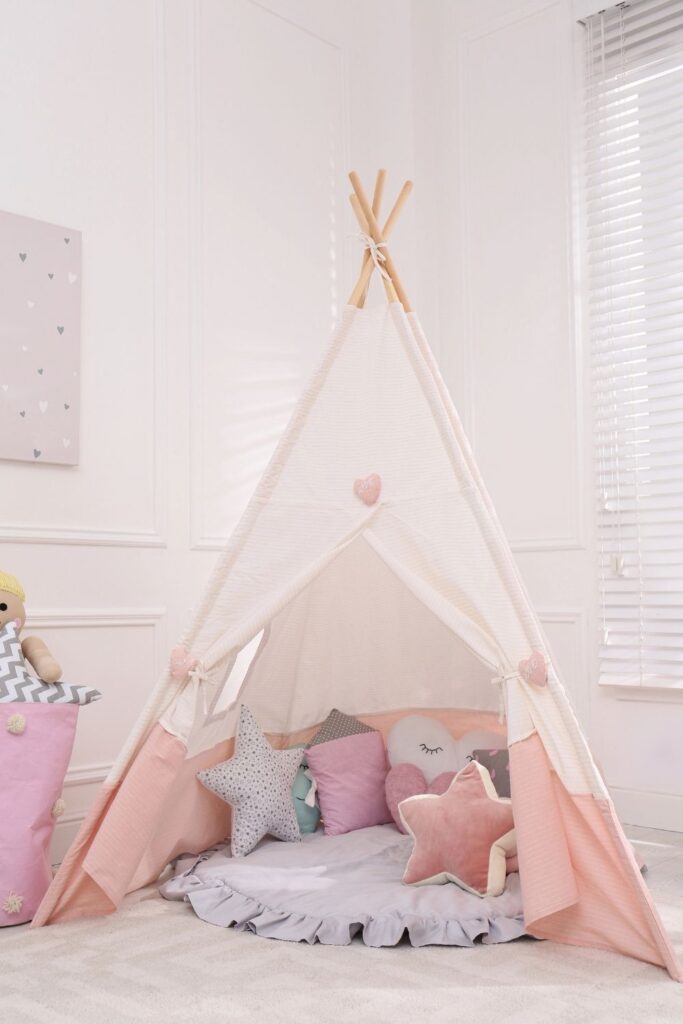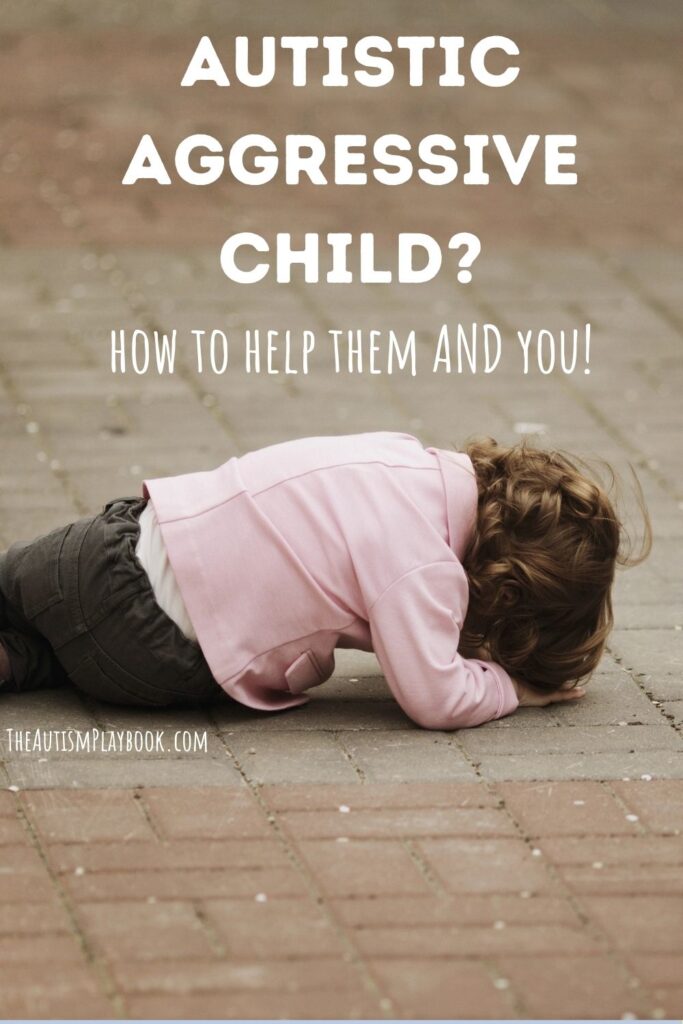My autistic child is shy, quiet, and slow to warm up to new people and surroundings. She’s also an artist, and spends hours drawing in her sketchbook and playing the piano by ear.
Those who only ever see her in public would tell you she’s a natural rule-follower, that they couldn’t picture her acting out if they tried. They can’t possibly imagine our true state at home, where I’m telling her for the millionth time that she cannot hit me because she’s angry.
As an autistic person myself, I get it!
I’ve endured a lifetime of anger, sometimes justified, other times not, thanks to my autistic brain. I’ve felt the urge to punch and hit others, to throw things across the room, to scream until my throat bleeds. But I don’t…because I’ve also had a lifetime to figure out my anger and get a healthy handle on my aggression.
What are you supposed to do with an autistic aggressive child who’s still learning that vital skill? And how can you help them to master self-regulation without squashing their sense of worth or setting them up for a lifetime of repressed feelings?
Before we can dive into how to help your child (and yourself) through autistic aggression, it’s important to understand where it’s coming from in the first place.
Understanding Aggression in Autistic Children
All children, autistic or not, are capable of displaying aggresive behaviour.
They can say or even scream awful things. They might hit, bite, scratch, or kick others, or throw things out of anger.
The difference with an autistic child’s aggressive behavior is what’s at the root of it.
The aggressive outbursts caused by autism spectrum disorder aren’t about getting your way, but rather about experiencing overwhelming sensory overload or communication difficulties. I can tell you from personal experience that autism-triggered aggressive behaviour feels beyond your control, as if your mind and body are working against you.
Common Triggers for Aggressive Behaviour
Sensory overload can play a huge role in an autistic child’s aggressive behavior. Bright lights, loud noises, crowded places, extreme temperatures, or even certain textures can make them feel what appears to be unreasonably angry.
As an autistic adult, I’ve learned to tell my husband, “I’m on edge with sensory overload right now. I need some space.”
But children haven’t quite learned to express their discomfort and ask for what they need yet. Many don’t even know what they need or understand why they feel so triggered. So they lash out.
Communication difficulties can also lead to aggressive behavior.
My daughter often knows she needs something but can’t quite deliver the message to me, no matter how hard she tries. And when autistic children can’t effectively communicate their needs, their brains often respond by turning on frustration full blast.
Aggressive behaviour can also be triggered by changes in routine.
The brains of autistic people are wired to run on predictable routines and repetitive behaviors. When unexpected changes occur, it can cause major distress, from mental and emotional turmoil to literal physical pain!
Autistic children aren’t reacting to these triggers because they’re spoiled or “acting out.”
They’re reacting because their brains aren’t wired to navigate these challenges as easily as neurotypical brains. In fact, their brains are often wired to the opposite of what they need in that moment.
I can tell you from experience, it’s haaaaard!
Differences Between Tantrums and Autistic Meltdowns
Most parents of autistic children will naturally think of their child’s aggressive behavior (and especially physical aggression) as a “tantrum.” Our parents didn’t stand for that back in the day, right?
But tantrums and autistic meltdowns are two very different things. And it’s super duper important that you learn how to tell the difference!
Tantrums are typically goal-oriented behaviors. Your kid cries to get something they want and stops when they achieve their goal.
Tantrums often involve:
- Watching for your reaction
- Stopping when they get what they want
- Selective timing and location
In contrast, autistic meltdowns are involuntary responses to sensory overload, communication difficulties, or any other form of overstimulation or anxiety.
During an autistic meltdown, your child isn’t trying to manipulate you. They’re experiencing genuine distress and loss of control.
Signs of a meltdown include:
- Intense reactions that don’t stop when needs are met
- Seeming unaware of surroundings
- Physical exhaustion afterward
Autistic children can experience both tantrums and autistic meltdowns. Learning to recognize which is which can help you decide how to respond most appropriately.
Managing Crisis Situations
So let’s get down to it! What are you supposed to do about it all?
We all know there are steps we can take to help our children avoid aggressive outbursts in the first place, right? Those are crazy important (and we’ll talk about those next) but I think the most pressing question for parents of autistic children is…what can you do in the moment?
How should you respond to challenging behaviors, when strong feelings lead to verbal outbursts? And how can you de-escalate more violent behaviors and physical aggression?
Handling Physical Aggression
During episodes of physical aggression, it’s important to prioritize the safety of your child, yourself, and those around you.
First things first: Stay calm. Breathe.
Your emotional state will directly affect your child’s response, so now isn’t the time to return fire with fire, even if you’re reaaaaally tempted. (I know I am!)
Speak gently and quietly, keeping your words to a minimum. Too many words can overwhelm an already overstimulated child, so throw away any long-winded speeches and keep it simple.
For example, instead of saying, “Hey, let’s remember the breathing exercise we’ve been practicing together! When I count down, we’ll breathe in for 4 seconds,” say, “Let’s breathe in, 2, 3, 4…”
Designate a “safe space” in your home or classroom or a mobile safe zone in your car where you can…you guessed it…manage aggressive outbursts safely. This can be any area where your child can safely sit, lay, or even thrash about that offers minimal sensory input.
Maximize the effectiveness of your safe space by:
- Removing dangerous objects from the environment
- Clearing other children from the area
- Having 1-2 calm adults present (no more)
- Avoiding physical restraint unless trained and absolutely necessary (Feeling “trapped” will only escalate already strong feelings.)
Approaches to Self-Injurious Behaviors
Self-injurious behaviors can offer both a stimming opportunity and in-the-moment physical relief to autistic people. These challenging behaviors can show up in the form of pulling their hair, biting themselves, scratching or picking at their skin, or banging their head against hard surfaces.
While the purpose is clear, it doesn’t make it feel any better, right? You don’t want your child hurting themself.
The best approach to self-injurious behaviors is to both (1) understand your child’s triggers and (2) ensure their immediate safety.
Many parents of autistic children find it helpful to keep a behavior journal to more easily identify patterns and triggers of their child’s self-injurious behaviors. They use it to note what happens before, during, and after incidents to spot potential causes like sensory overload or communication difficulties and avoid them in the future.
It can also help to seek professional support from your child’s therapist or pediatrician. They’ll be familiar with your child’s history and symptoms, and can provide customized strategies tailored to their specific needs.
And of course, you’ll want to help them avoid self-injury as it’s happening, especially during aggressive outbursts, when physical aggression intensifies.
My personal go-to strategy is distraction. I know what my daughter likes, the things she’s looking forward to, and the things that are most likely to shift her focus (animals, music, etc.), and I mention them in a casual way that doesn’t feel like a demand (one of the best ways to avoid her tendency toward pathological demand avoidance or PDA).
It’s almost as if I pretend my child’s aggression and self-injurious behaviors aren’t happening at that moment. By remaining calm and nudging her attention toward something else, I can usually nudge her physical reaction off the tracks they were barreling down.
When self-injurious behaviors are more serious, you may need to take a few protective measures in the moment. These might include:
- Padded helmets for head-banging
- Gloves or arm guards for biting/scratching
- Sensory alternatives (chewy toys, compression items)
Keep in mind, though, that feeling restricted or “trapped” can sometimes escalate already strong feelings for autistic people, so…know your child and choose any protective measures accordingly.

Communication Strategies
Now that we’ve talked about what to do in the moment, let’s discuss how to experience those moments less often!
Developing effective communication skills is absolutely key to helping autistic children better express themselves and reduce aggressive behaviours. Equipping your child with the right tools and techniques will make a huge difference in how they connect with others and share their needs in appropriate ways.
Improving Expression of Needs
When autistic children aren’t able to express their needs, it often triggers an aggressive response in their brain and body. You can help them avoid that trigger by teaching them more effective ways to communicate their needs!
Many parents of autistic children have found visual supports like communication boards, picture cards, or The Picture Exchange Communication System to be game-changers. These tools give children who struggle with finding the right words or speaking altogether a way to effectively communicate their wants and needs.
Sign language can also offer a fantastic alternative! It not only provides a means of communicating their needs but does so silently, avoiding further sensory overload.
If your child is struggling to pinpoint their needs, let alone communicate them, offering choices can be a helpful strategy.
Verbally offer (or physically display) two options and ask which one your child wants. This practice builds requesting skills and gives your child a greater sense of control, both of which help to curb aggressive outbursts in autistic people.
Dealing with Communication Difficulties
Outside of communicating our needs, communication and social interactions in general are just straight-up difficult for autistic people. We take things very literally, struggle to follow verbal instructions, and need more time to process what you’re saying (ask my husband how many times I’ve come back days later to finish a conversation).
Adapting your communication style will lead to less frustration not only for your autistic child, but also for yourself!
First things first, eliminate distractions when you’re speaking with your child.
We regularly pause the TV when we’re talking to our autistic child to help reduce her sensory input. You might also need to turn down bright lights, minimize distractions, and pause multitasking to ensure more effective communication.
Keep your language simple and direct.
Complex instructions can overwhelm an autistic person, and especially an autistic child, leading to frustration and aggressive behaviour. Break directions into small, clear steps, pausing between them to allow for completion whenever possible.
Offer a patient tone and body language, and give your child extra time to process what you’re saying. Many autistic children need more time to understand and respond to communication.
This is an area where consistency is super important! Work with your family members, teachers, and therapists to use the same form of communication across as many settings as possible.

Creating a Supportive Sensory Environment
Sensory overload also plays a huge role in triggering aggressive behaviour!
Children with autism spectrum disorder experience the world differently (and much more intensely!) due to their sensory sensitivities. Creating the right environment can help reduce stress and prevent aggressive behaviour by making your child feel safe and understood.
Adapting Physical Spaces
Your home environment can be adjusted to support your child’s sensory differences. Organizing, providing structure, and making room for repetitive behaviors and routines helps create predictability, which is calming for many autistic people.
A few modifications you might consider include:
- Lighting: Replace harsh fluorescent lights with soft, natural lighting.
- Sound: Reduce background noise and echoes with rugs, curtains, or sound-absorbing panels.
- Visual cues: Use simple, clear visual schedules and labels.
- Safe space: Create a dedicated sensory-friendly zone for retreat when overwhelmed.
Remember that every child has unique sensory sensitivities and needs.
Some may seek out sensory input through jumping or swinging, while others require more gentle stimulation. For that reason, you’ll want to lean into whatever your child tells you helps most, rather than what you feel should help most.
Maintaining predictable routines is also essential.
When autistic people know what to expect, they’re less likely to feel anxious and act aggressively. You can help keep transitions between activities smooth by providing advance notice (e.g. “Five minutes before you have to start your homework!”) and utilizing visual timers.
Managing Sensory Overload
Helping to protect your autistic child from sensory overload will go a long way in reducing their aggressive behaviour. Watch for signs that your child is becoming overwhelmed, which might include covering their ears, squinting their eyes, or becoming increasingly agitated.
When you recognize the signs, try these strategies to help them:
- Offer noise-canceling headphones in loud environments or sunglasses in bright environments.
- Retreat to a calm-down corner with comforting items.
- Employ fidget spinners or sensory toys that help with regulation of stressful situations.
- Provide sensory breaks throughout the day.
Self-Care and Support for Caregivers
Caring for an autistic aggressive child can feel frustrating, overwhelming, and physically and emotionally draining. Taking care of yourself and finding the support you need is absolutely vital for the sake of both you and your child.
Recognizing the Need for a Break
Your well-being matters just as much as your child’s! It’s not selfish, it’s a fact.
Stay on the lookout for signs that you need a break, such as chronic exhaustion, increased irritability, and changes in sleep patterns. These are a few of the signals your body sends to indicate that your stress levels are too high.
When you recognize the signs, make time to engage in an activity that helps you to rest and refresh, such as taking a walk, reading a book, or enjoying a hobby. Heck, sometimes just getting out of the house to run an errand by myself does the trick for me!
The activity you choose doesn’t have to take long (though it can if you’d like). Even a 10 to 15-minute break can make a positive impact.
I’ve also found that building small breaks into my daily routine is one of the best ways to help manage my stress levels.
I wake up an hour before my autistic child does to start my day out on a quiet and calm foot. I make a point of taking my work breaks and lunch to rest, rather than knocking more to-dos off my list. And after I tuck my child in at night, I spend 30 minutes drinking tea and reading a book in bed to help me unwind.
Self-care basics you’ll want to prioritize:
- Regular meals and hydration
- Adequate sleep when possible
- Physical activity, even if brief
- Social connections with friends or support groups
Exploring Respite Care Options
Finding respite care simply means utilizing your support network to find some temporary relief from caregiving. Parents of autistic children can’t fully rest unless they know the person caring for their child understands and supports their diagnosis, which sometimes means our support networks are small.
Your options for respite care can vary:
- Family members or trusted friends
- Professional in-home respite providers
- Community respite programs
- Camps or recreation programs with qualified instructors
When selecting respite care, you’ll want to ensure providers understand autism spectrum disorder and how best to manage aggressive behaviours. Provide them with detailed information about your child’s triggers, calming techniques, and communication style.
When utilizing professional help, it may be best to start with short respite sessions to help your child adjust. Many families find that accepting help becomes easier over time as both caregivers and children build comfort with the arrangement.
No matter how you find rest, remember that taking regular breaks and utilizing respite support is a good thing.
It allows your child to connect with family members, family friends, and medical professionals who love and care about them. Plus, it helps you avoid burnout and returns you to caregiving with renewed energy and patience.

It is hard work raising an autistic aggressive child. I know it from raising my daughter. My own parents know it from raising me.
But it’s also such meaningful, life-changing work. It’s far from dramatic to say that the skills you’re teaching your child today will serve them well for their entire life.
So hang in there, parents! Hang in there, grandparents, aunts, uncles, teachers, and caregivers! You’re changing your autistic loved one’s life in a way they will appreciate for a lifetime…even if they don’t seem to appreciate it today.
Have any tips that are working well for managing your child’s aggressive behavior? Please, please, please share with us in the comments!
We’ve got this!

How to Teach Kids with Autism: 14 Tips From an Autistic Mom
Saturday 26th of April 2025
[…] found that when my daughter starts trending toward a meltdown, she stops processing what I’m saying to her altogether. So while continuing to push through […]